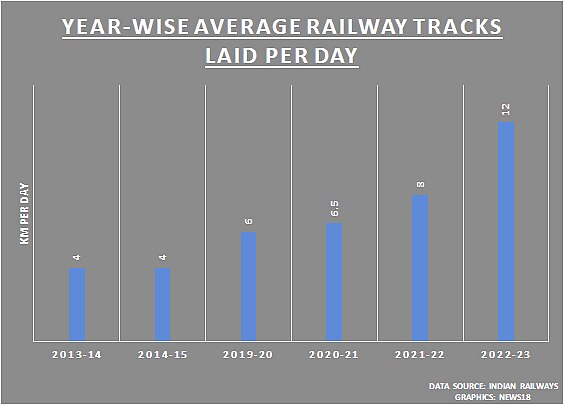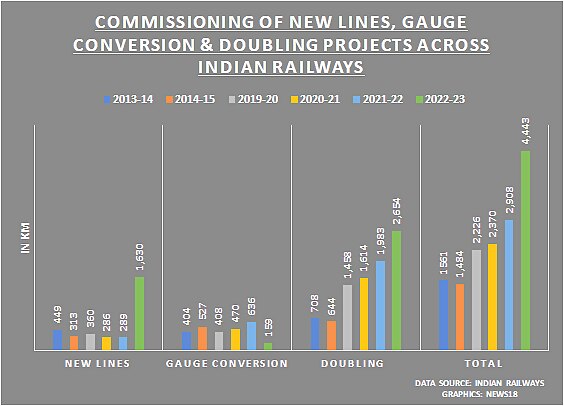
views
Railway minister Ashwini Vaishnaw had said last month that the ministry has achieved the target of laying railway tracks for a distance of 4,500 km, that is, nearly 12 km per day on an average, in the outgoing financial year (2022-23). This is three times more than what was accomplished in 2014 or 2015.
For the 2023-24 financial year, the ministry has set a target of laying new railway tracks for a distance of 7,000 km – around 20 km per day on an average. But the question here is how has the Indian Railways managed to achieve this massive target? There are four major reforms that are helping railways, according to a senior official.
Gati Shakti Directorate and Gati Shakti Units
The first two reforms, which helped the ministry improve the performance, are the setting up of Gati Shakti Directorate and Gati Shakti Units. The Railway Ministry has set up a multi-disciplinary Gati Shakti Directorate in the Railway Board.
“It has members from various departments. This acts as a nodal agency,” the ministry official told News18.
The official explained that earlier the files used to go to different departments but now they go to the Gati Shakti Directorate. The directorate does not have very senior officials but Higher Administrative Grade (HAG) level officials from different departments. These officials are in-charge of their departments for the directorate and get all the approval needed for the project.

The ministry also formed Gati Shakti Units in all the 68 divisions. These units are responsible for planning and execution of station redevelopment, signal and telecommunication, all siding works and deposit work, provision of escalator and lifts, road safety and level crossing, Road Under Bridge (RUB) and Road Over Bridge (ROB) and other passenger amenities or traffic facilities.
“Now, with these units, the DRM has more administrative powers and can sanction plans that were earlier to be approved by the board. Now, they (DRMs) can cancel and divert trains if it is needed to. Earlier, all these approvals were needed from the board,” the official said, adding that this has sped up the work to a very large extent.
Better and timely payment for projects
Late and untimely payments have been among the major reasons for delay and slow progress of projects. So far, the rules said the payments for any bills related to a project cannot be sanctioned before 50 days.
“But now, we have made it a rule that the payments should be done in 30 days of submitting a bill in all new tenders otherwise we will pay an interest equal to the bank rate of that time plus 3% extra. So, right now, if a bill payment is delayed, we have to pay 9% interest. Now, no official can make a mistake of paying 9% interest. The payment needs to be done within 30 days,” the official explained.

The delay in payments used to result in delayed work. Earlier payments used to take up to one year. But now with fast payments, the work is also done faster, the official explained.
Contract in EPC mode
EPC stands for Engineering, Procurement, and Construction, in which, the contractor has to decide everything but needs approval from the ministry.
“Earlier, we used to give our own store supplies. Say for cement, we said we will give it to the contractor. To get that cement, we needed to issue another tender and contract. All these things were time taking. Also, if we stored that in our godown, it was our responsibility to ensure that it is safe and not stolen or damaged. Now, we don’t have to deal with these issues,” the official added.
A standard EPC bid document has also been fixed. Earlier, for each project the bid document had to be designed, which used to take a lot of time.
“Now, we use this standard document and we use that directly without much hassle,” the official added.
The ministry is also aiming that with these reforms, it can offer better facilities to the passengers through more lines in the future.
Read all the Latest India News here




















Comments
0 comment